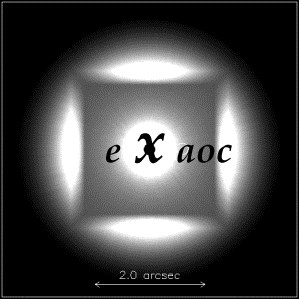
For the first time in history, direct and indirect detection techniques have permitted astronomers to explore the environments of nearby stars on scales comparable to the size of our solar system. Exploitation of precision Doppler measurements has led to the discovery of the first extrasolar planets, while high-contrast imaging has revealed new classes of objects including dusty circumstellar debris disks and brown dwarfs. These discoveries have galvanized public interest in science and technology and have led to profound new insights into the formation and evolution of planetary systems, and they have set the stage for the next steps: direct detection and characterization of extrasolar Jovian planets.
Imaging such planets from the ground will require next-generation “Extreme” adaptive optics systems an order of magnitude more powerful than current AO. The NSF Center for Adaptive Optics (CfAO) has been one of the major players in this field. A CfAO-led team has been selected to carry out a conceptual design study for a Gemini Extreme Adaptive Optics Coronagraph (ExAOC.) In addition to our core CfAO members – LLNL, UCSC, UC Berkeley, and JPL – our team includes as a major partner the Herzberg Institute of Astrophysics group in Canada who delivered Altair, perhaps the world’s most sophisticated AO system, to Gemini. The collaboration also includes the University of Montreal group that invented the concept of differential multi-wavelength imaging for AO, together with the UCLA infrared instrumentation laboratory, the American Museum of Natural History Lyot Project team, and the world’s leading manufacturer of MEMS deformable mirrors. We have a world-class science team to guide our effort.
Our team has produced a system design incorporating a spatially-filtered wavefront sensor that allows precise control of mid-frequency aberrations that scatter light over the 0.1-1.3” range. By removing these phase errors we can produce a PSF with a characteristic “dark hole”. Combined with compact high-order MEMS deformable mirrors, fast efficient wavefront control algorithms, high-accuracy calibration, and differential imagers, we believe we can deliver contrast a factor of a hundred or more better than current AO systems

